Ever wondered whether your hormone‑replacement therapy (HRT) might be doing more than easing those hot flashes? The short answer is yes – tiny amounts of the medication can slip into the environment after you take it, and they can cause real‑world effects on wildlife and water quality. The good news? Most of the impact stems from how we dispose of the meds, not from the therapy itself. By understanding the journey, the risks, and simple steps you can take, you’ll protect both your health and the planet.
How HRT Enters Water
Think of your body as a tiny processing plant. When you take an estradiol pill, a patch, or a cream, not every molecule gets broken down. A surprising 10‑30 % of the active hormone can survive metabolism and show up in urine or stool. Once it reaches the sewer, the story continues.
What happens after you excrete it?
Most of us flush the toilet without a second thought. The hormone‑laden urine merges with countless other waste streams and heads straight for the local wastewater‑treatment plant (WWTP). There, conventional secondary treatment—usually just a mix of bacteria and aeration—does a decent job at trimming organic material, but synthetic hormones are stubborn. Studies show removal rates ranging from 30 % to 80 %, leaving measurable traces downstream.
How do waste products become pollutants?
It isn’t just the excreted hormone. Empty blister packs, used patches, and leftover tablets often end up in regular trash. In landfills, rainwater leaches chemicals into the ground, eventually reaching groundwater. Hospitals and clinics produce larger quantities of unused HRT, and unless they have dedicated disposal protocols, those doses can follow the same route.
Why doesn’t the WWTP catch everything?
Standard plants target nitrogen, phosphorus, and visible waste. Hormones, however, are active at parts‑per‑trillion levels—far below the detection limits that trigger regulatory action. Advanced treatments like ozonation or activated carbon can pull the plug on these micro‑pollutants, but they are expensive and not yet the norm in most municipalities.
What does the research say?
According to an EPA report, estradiol, estrone, and synthetic progestins have been detected in rivers across the United States, often at concentrations between 0.1–10 ng/L. Those numbers may look tiny, but hormones are biologically active at exactly those levels.
Environmental Effects
When these low‑level hormones enter ecosystems, they behave like tiny whispering agents, nudging the biology of other organisms without outright killing them.
Aquatic wildlife – what’s at risk?
Fish are the canaries in the coal mine for endocrine disruption. Laboratory tests on the fathead minnow (Pimephales promelas) show that even 1 ng/L of estradiol can cause feminisation of male fish—producing eggs in testes and altering mating behavior. In the wild, researchers have found intersex carp in rivers downstream of WWTPs, a clear sign of hormone‑therapy pollution.
Terrestrial ecosystems
When biosolids (the “sludge” from WWTPs) are applied as fertilizer, they carry hormone residues into the soil. Earthworms exposed to these sludges exhibit changes in reproduction rates, and some studies suggest that hormone‑laden soils can alter plant growth patterns, though the data is still emerging.
Human health concerns
Most tap water in developed countries meets safety standards for pathogens and chemicals, but hormone monitoring is not mandatory. The World Health Organization (WHO) has flagged endocrine‑disrupting chemicals as a precautionary public‑health issue, urging further research into chronic low‑dose exposure via drinking water.
Combined effects with other pharmaceuticals
Imagine a cocktail party where each guest is a different drug. Together they can create unexpected reactions. Hormones often co‑occur with antibiotics, antidepressants, and painkillers in wastewater, amplifying ecological stress. A comparative table helps illustrate the scale.
| Compound | Typical influent (ng/L) | Typical effluent (ng/L) | Ecological potency |
|---|---|---|---|
| Estradiol (HRT) | 5‑15 | 2‑10 | High (active at ppt) |
| Ibuprofen (pain reliever) | 200‑500 | 20‑100 | Medium |
| Fluoxetine (antidepressant) | 100‑300 | 10‑50 | Medium |
| Carbamazepine (anticonvulsant) | 150‑400 | 30‑120 | Low‑Medium |
Disposal Best Practices
Now that we know where the problem starts, let’s talk about how you can be part of the solution. The simplest rule is: don’t flush.
Do‑not‑flush rule
Even if the packaging says “flush when finished,” that’s a relic of old guidelines. Hormone tablets, patches, and creams maintain their potency long after they’re tossed in the bowl, trickling straight into the river system.
Take‑back programs
Many pharmacies, hospitals, and even some local councils run “drug‑take‑back” bins. You can drop off unused pills, empty patches, or leftover creams for safe incineration. If you’re not sure where the nearest bin is, a quick call to your pharmacy usually does the trick.
Packaging & unused medication
When you have a half‑finished bottle, crush the pills (if they’re solid) and mix them with coffee grounds or cat litter before placing them in the trash. This makes them less appealing to anyone who might rummage through waste and helps prevent accidental ingestion by pets.
Clinic‑level protocols
If you get your HRT from a clinic, ask if they have a “green disposal kit.” Some specialist menopause centres have partnered with waste‑management firms to retrieve and properly destroy used patches and creams. It’s a small ask, but it can make a big difference.
Home‑scale water‑treatment hacks
While not a substitute for proper disposal, installing an activated‑carbon filter on your toilet can capture a modest amount of residues before they hit the sewer. It’s not a silver bullet, but every drop counted.
Policy you can influence
Write—or better yet, call—your local water authority and ask whether they monitor hormone levels. Support initiatives that fund advanced treatment upgrades. Your voice, combined with others, can push municipalities toward installing ozonation or membrane filtration, which are far more effective at stripping out endocrine disruptors.
Pollution Comparison
Is HRT really the worst offender, or are we just focusing on the most talked‑about drug?
How do HRT levels stack up against antibiotics?
Antibiotics often appear at higher concentrations in wastewater, but hormones are biologically potent at far lower doses. A nanogram of estradiol can equal the effect of a microgram of many antibiotics on aquatic organisms.
Which drug class poses the biggest risk?
Based on recent European monitoring, synthetic estrogens (used in most oral HRT) rank at the top of the “high‑risk” list, followed by progestins, NSAIDs, and finally antidepressants. That doesn’t mean the latter are harmless—just that their ecological effect per unit concentration is lower.
Are there “green” alternatives?
Bioidentical hormones—derived from plant sources like yams—often break down more quickly in the environment, but they’re not a cure‑all. Non‑hormonal options such as cognitive‑behavioral therapy, lifestyle changes, or low‑dose antidepressants can reduce reliance on HRT, thereby easing environmental pressure.
Cost‑benefit snapshot
A quick look at the trade‑offs helps put things in perspective:
| Option | Health Benefit | Environmental Cost | Typical Cost (USD) |
|---|---|---|---|
| Standard HRT (synthetic) | Strong symptom relief, bone protection | High (persistent hormones) | ~$30‑$70/month |
| Bioidentical HRT | Similar relief, sometimes better tolerance | Moderate (quicker degradation) | ~$40‑$80/month |
| Non‑hormonal therapies | Variable relief, may need combos | Low (no hormone discharge) | ~$20‑$100/month |
Expert Insights
Getting the facts straight often means listening to the people who study them every day.
Interview with an environmental toxicologist
I spoke with Dr. Maria González, a water‑quality specialist at the University of Portland. She explained, “Hormones are unique because they act at extremely low concentrations. Even if we capture 90 % of a pharmaceutical, the remaining 10 % can still be enough to trigger physiological changes in fish.” Her research also highlighted that advanced treatment upgrades, though costly, can achieve >99 % removal, essentially neutralising the risk.
Key scientific papers
For those who love digging into the nitty‑gritty, check out the article “Endocrine‑Disrupting Chemicals in the Aquatic Environment” in Environmental Science & Technology (2022). Another solid source is the WHO study on water‑borne contaminants, which outlines global guidelines for managing low‑dose pollutants.
What do major health sites say?
You’ll notice that giants like Healthline and the NHS provide thorough coverage of HRT’s health benefits and risks—yet they rarely mention the environmental side‑effects. That omission creates a knowledge gap, which is why we’re here, sharing the full picture.
Future monitoring initiatives
The European Union is drafting a “PPCP Watchlist” slated for 2026, aiming to track pharmaceuticals, including hormones, across member states. In the U.S., the EPA’s National Water Quality Monitoring Council has launched pilot studies focusing on endocrine disruptors in major river basins. These efforts signal that the issue is moving from the lab to policy.
Bottom line from experts
Most scientists agree: the environmental risk from HRT is real but manageable. Proper disposal, upgraded treatment plants, and informed prescribing can keep the load low while preserving the undeniable health benefits for menopausal individuals.
Quick Checklist
- ✅ Never flush pills, patches, or creams.
- ✅ Use local drug‑take‑back or pharmacy disposal bins.
- ✅ Ask your prescriber about bioidentical or lower‑dose options.
- ✅ Support community water‑quality monitoring (sign petitions, attend town‑hall meetings).
- ✅ Stay updated on new regulations like the EU‑PPCP Watchlist.
Keep this list handy—maybe pin it on your fridge or bathroom mirror. Small habits add up to big change.
Wrapping It Up
Hormone‑replacement therapy has helped countless people navigate menopause with confidence and comfort. At the same time, a tiny fraction of those hormones can travel far beyond our bodies, whispering changes into rivers, soils, and possibly even our drinking water. The silver lining is that the majority of that whisper can be silenced with mindful disposal and a push for better water‑treatment technology.
So, the next time you finish a blister pack or toss an old patch, pause and think: “Am I protecting my health AND the planet?” A few seconds of thought can turn a routine act into a small act of stewardship. If you’ve tried any of these disposal tricks, have questions, or just want to share a story, drop a comment below. Let’s keep the conversation going and make menopause relief a win‑win for us and the environment.

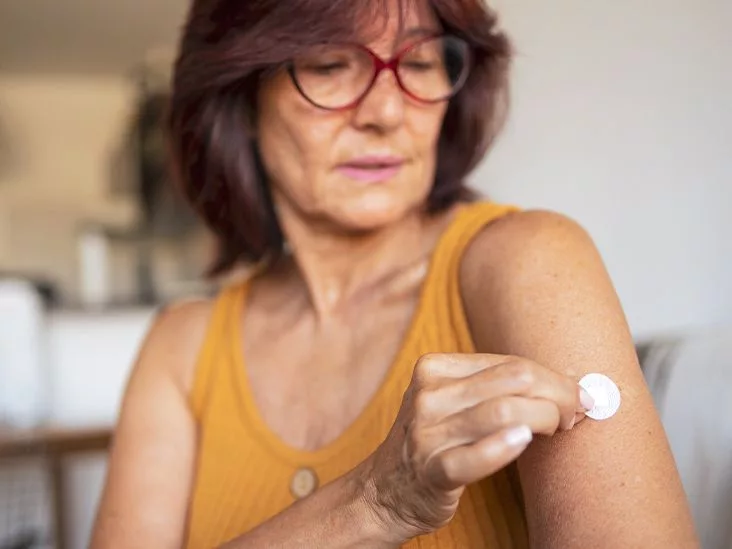
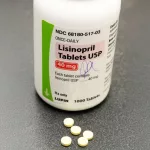
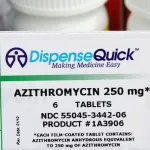

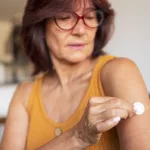


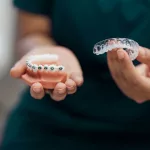



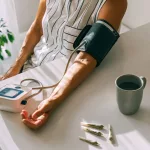

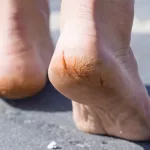

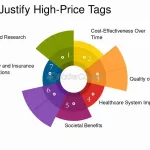

Leave a Reply
You must be logged in to post a comment.